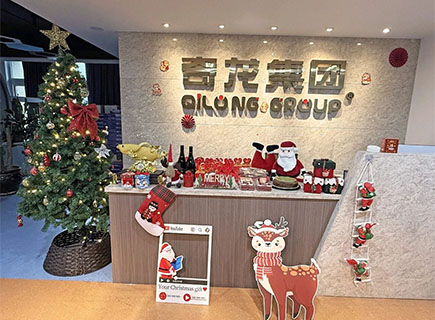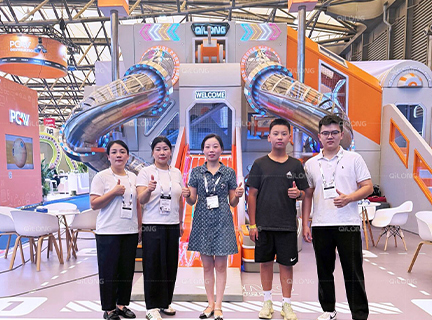From Concept to Fun: Qilong’s Indoor Playground Innovations at GTI Expo 2025
September 13, 2025
GUANGZHOU, CHINA – September 2025 – This September, QILONG made a bold and vibrant presence at the GTI Asia China Expo 2025, one of the most prominent amusement and leisure industry trade shows in Asia. Known for its full-package solutions for indoor playgrounds and family entertainment centers (FECs), QILONG once again demonstrated why it's a trusted leader in the global play industry.
High-Energy Crowds and Real-Time Sales
The atmosphere at QILONG’s booth was electric. With a steady stream of attendees, industry buyers, and curious families, the booth quickly became one of the most visited areas of the entire exhibition. A highlight of the event was the on-site sale of one of QILONG’s newest showpieces, underscoring the real-time excitement and strong market demand for innovative play concepts.
Debut of Hybrid Ninja + Ropes Course Concept
QILONG’s latest featured product—a dynamic fusion of Ninja Warrior challenge elements with aerial ropes course design—received overwhelmingly positive feedback. This new concept blends athletic challenge, agility, and adventure, creating a thrilling yet safe experience for a wide age range. Designed to engage both children and young adults, it’s ideal for modern FECs seeking to stand out with multi-age attractions.
The structure incorporates swinging obstacles, balance beams, climbing elements, and zipline routes, all elevated on a compact multi-level frame, making it suitable for indoor venues with limited space but high entertainment ambitions.
Expanding the FEC Vision
One-Stop Service & Full Product Line
QILONG used this opportunity to reinforce its position as a one-stop solution provider for FEC investors and operators. From initial concept planning and 3D design, to in-house production, international shipping, and on-site installation, QILONG delivers a seamless process with full after-sales support.
In addition to the new Ninja + Ropes product, QILONG showcased a lineup of new large slides, including:
🚀 Space Bowl Spinners
🌀 Stainless Steel Double Spiral Slides
🐾 Swinging Curve Slides
All these are designed to enhance both visual appeal and functional play value within any play space.
Family-Oriented Design Meets Global Standards
With a growing focus on multi-generational play experiences, QILONG’s booth highlighted how FECs can be transformed into interactive, family-bonding destinations. Each piece of equipment is engineered with EN1176 and ASTM safety certifications, and uses high-quality, low-maintenance materials, ensuring long-term operation with peace of mind.
“We are not just selling products,” says QILONG's international marketing team. “We’re helping our clients design immersive, profitable, and safe environments where families can create lasting memories.”
Looking Ahead
Global Expansion with Local Adaptation
Following the success of GTI 2025, QILONG is already working on multiple new projects across Europe, the Middle East, and Latin America, adapting each playground design to local cultural themes, shopping center layouts, and target age demographics. As trends continue to evolve, QILONG is committed to remaining at the forefront of play innovation, delivering modular, themed, and smart-integrated attract
View More




















![Qilong Concludes IAAPA Europe [2025] with Resounding Success and New Partnerships](https://www.playgroundplay.com/storage/uploads/images/202510/14/1760425907_Qcd4zk0IL9.jpg)













